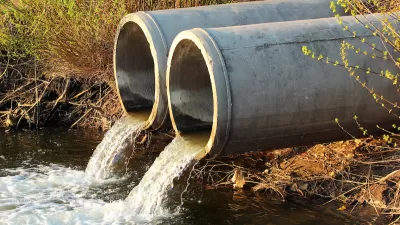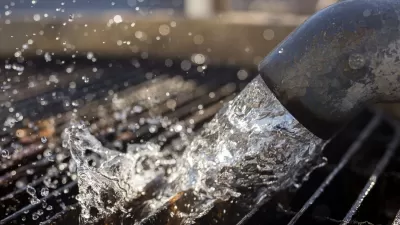The raw and partially treated sewage that has for the past month, and continues to, flow into the New York region's waterways "will be one of the most enduring and expensive effects of Hurricane Sandy," reports Michael Schwirtz.
New York has suffered from the occasional storm related sewage release for decades, but the hundreds of millions of gallons of raw and partially treated sewage that has flowed into waterways in New York and New Jersey over the past month is unprecedented. As bad as that deluge sounds, and smells, the long-term impacts are far more concerning. As Schwirtz notes, "[a]lmost all [sewage treatment] facilities in the region are situated close to sea level and are vulnerable to storm surges," and repairing and protecting the area's wastewater infrastructure "could take several years and billions of dollars."
"In New York alone," says Schwirtz, "Gov. Andrew M. Cuomo has estimated that about $1.1 billion will be needed just for repairs to treatment plants. But officials now acknowledge that they will have to do far more. Motors and electrical equipment must be raised above new flood levels, and circuitry must be made waterproof. Dams and levees may have to be built at some treatment plants to keep the rising waters at bay, experts say. Failure to do so could leave large swaths of the population vulnerable to public health and environmental hazards in future storms, experts said."
“'You’re looking at significant expenditures of money to make the plants more secure,' said John Cameron, an engineer specializing in wastewater treatment facilities who is chairman of the Long Island Regional Planning Council. 'There is no Band-Aid for this,' Mr. Cameron said. 'This is the new normal.'”
h/t to Daniel Lippman
FULL STORY: Sewage Flows After Storm Exposes Flaws in System

Planetizen Federal Action Tracker
A weekly monitor of how Trump’s orders and actions are impacting planners and planning in America.

Maui's Vacation Rental Debate Turns Ugly
Verbal attacks, misinformation campaigns and fistfights plague a high-stakes debate to convert thousands of vacation rentals into long-term housing.

San Francisco Suspends Traffic Calming Amidst Record Deaths
Citing “a challenging fiscal landscape,” the city will cease the program on the heels of 42 traffic deaths, including 24 pedestrians.

Amtrak Rolls Out New Orleans to Alabama “Mardi Gras” Train
The new service will operate morning and evening departures between Mobile and New Orleans.

The Subversive Car-Free Guide to Trump's Great American Road Trip
Car-free ways to access Chicagoland’s best tourist attractions.

San Antonio and Austin are Fusing Into one Massive Megaregion
The region spanning the two central Texas cities is growing fast, posing challenges for local infrastructure and water supplies.
Urban Design for Planners 1: Software Tools
This six-course series explores essential urban design concepts using open source software and equips planners with the tools they need to participate fully in the urban design process.
Planning for Universal Design
Learn the tools for implementing Universal Design in planning regulations.
Heyer Gruel & Associates PA
JM Goldson LLC
Custer County Colorado
City of Camden Redevelopment Agency
City of Astoria
Transportation Research & Education Center (TREC) at Portland State University
Jefferson Parish Government
Camden Redevelopment Agency
City of Claremont




























